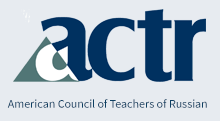Russian Language Journal
Keywords
foreign language, education, immigration, heritage
Abstract
The heritage learner within U.S. foreign language education has received increasing attention over the past two decades, as university programs with substantial numbers of heritage students have developed improved diagnostic and curricular offerings for addressing the particular needs of those whose learning of their native language was incomplete or interrupted due to immigration to the U.S. (Valdés, 2000; Kagan & Dillon, 2004). While the heritage learner within the domestic language learning context is relatively well represented in the literature, relatively little research has been devoted to the acquisition experiences of heritage learners engaged in overseas immersion study (re-learning) of their home language. (Freed, 2004; Kinginger, 2009). Those studies which do exist focus primarily on the issue of learner identity (Beausoleil, 2008; Moreno, 2009). Heritage learners have the capacity to reach near-native proficiency in their first language, to become “balanced bilinguals” with all the cultural and metalinguistic awareness that this entails (Polinsky, 2010). The present study examines one possible pathway to near-native proficiency (defined here as Level 3+ or Level 4 across modalities) for the heritage learner, based on an overseas immersion as a language learner, university student, intern and homestay resident.
Recommended Citation
Davidson, D. E., & Lekic, M. D. (2012). Comparing Heritage and Non-Heritage Learning Outcomes and Target-Language Utilization in the Overseas Immersion Context: A Preliminary Study of the Russian Flagship. Russian Language Journal, 62(1). https://doi.org/10.70163/0036-0252.1157

